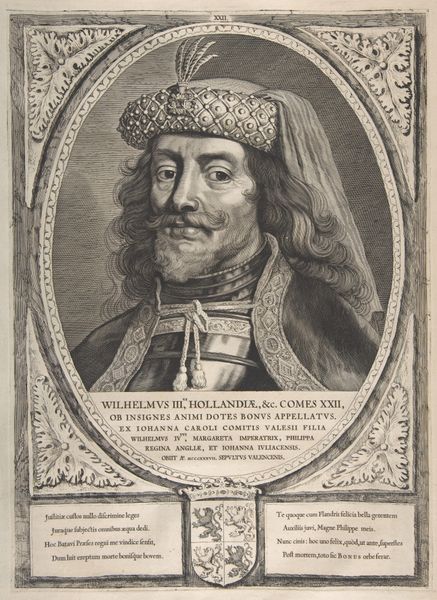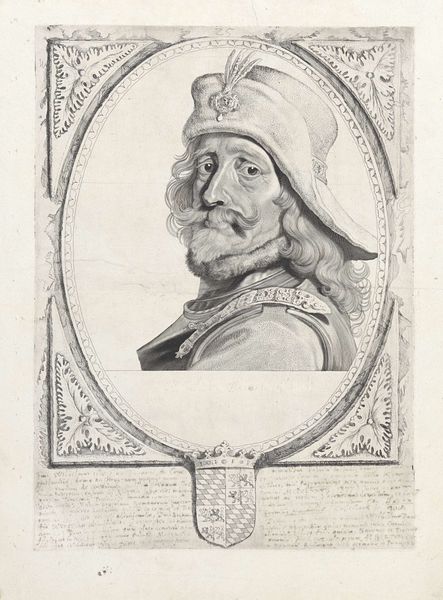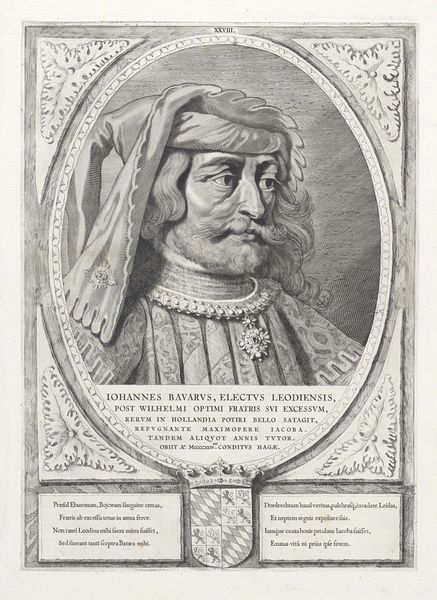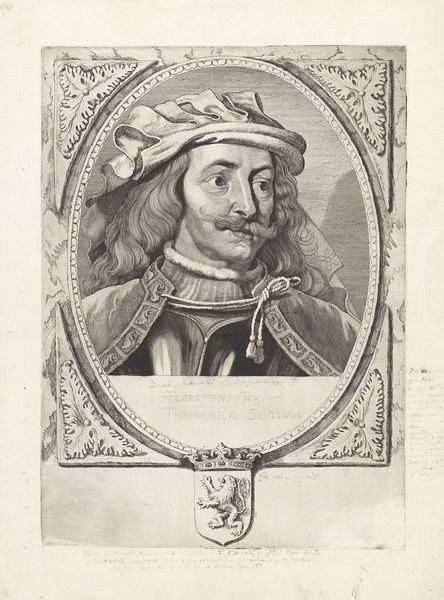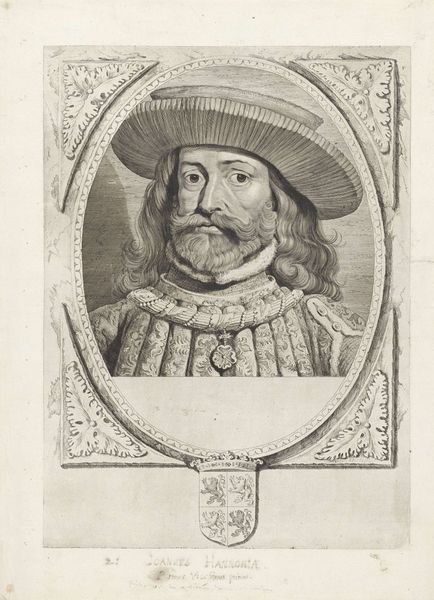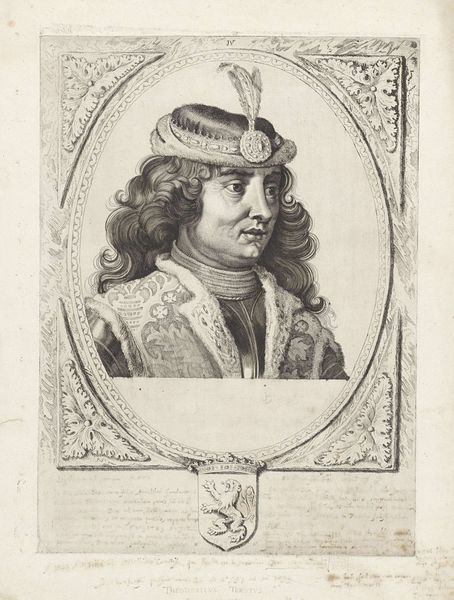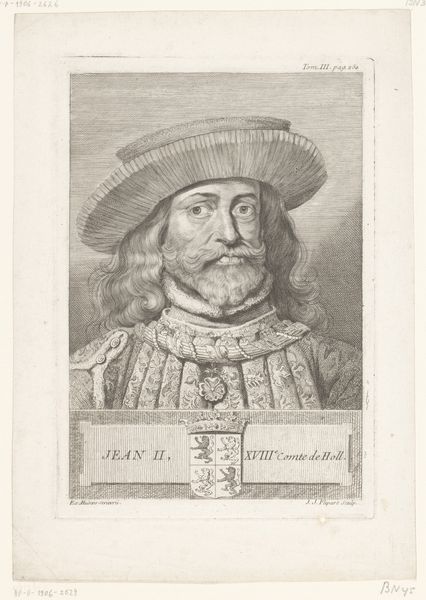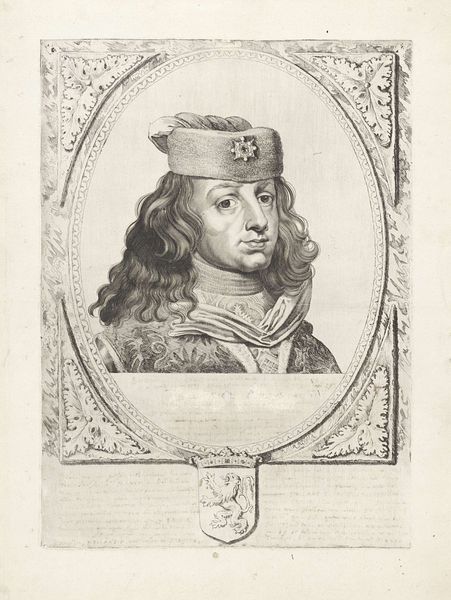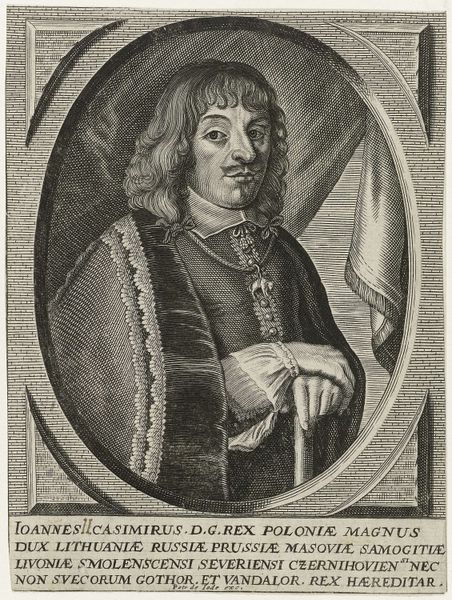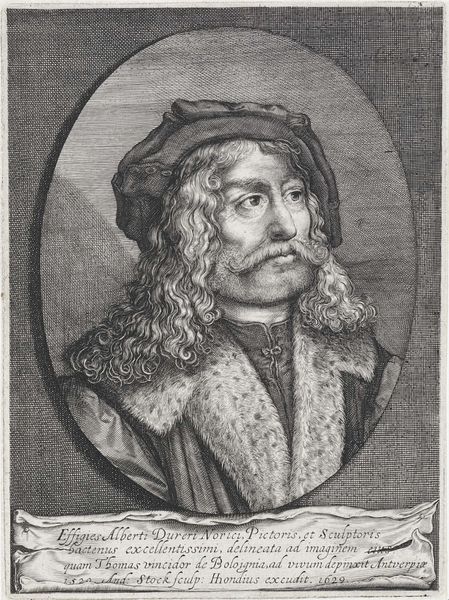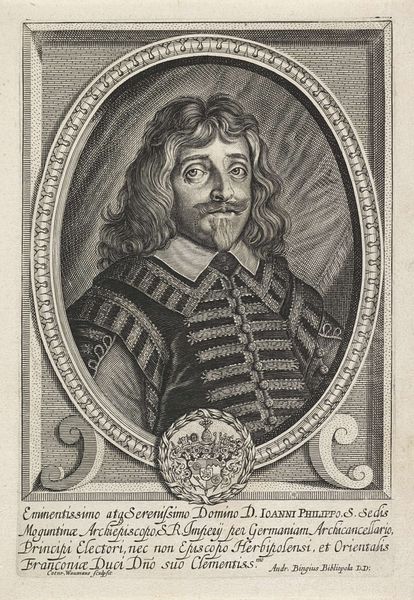
print, engraving
#
portrait
#
baroque
#
dutch-golden-age
# print
#
figuration
#
line
#
history-painting
#
engraving
Dimensions: height 401 mm, width 292 mm
Copyright: Rijks Museum: Open Domain
This is Cornelis Visscher’s portrait of Willem III, Count of Holland, an engraving made around the mid-17th century. Willem III is adorned with a jeweled turban, complete with a plume, a symbol of status and power in the Dutch Golden Age, hinting at exotic and worldly influences, but also of wealth and the power to acquire luxury items. Turbans, like the one here, have been worn across different cultures and times. We see them not only as symbols of nobility in Renaissance portraits, but they echo the headdresses of Ottoman sultans and the magi in early Christian art. This cross-cultural adaptation speaks to a universal desire for distinction. Note also the elaborate frame surrounding Willem's image, filled with foliage and heraldic symbols. These motifs evoke a deep-seated psychological need to claim lineage and legitimacy, engaging the viewer in a complex narrative of ancestry and power. Through symbols, we touch the intangible threads that connect us to the past.
Comments
No comments
Be the first to comment and join the conversation on the ultimate creative platform.
